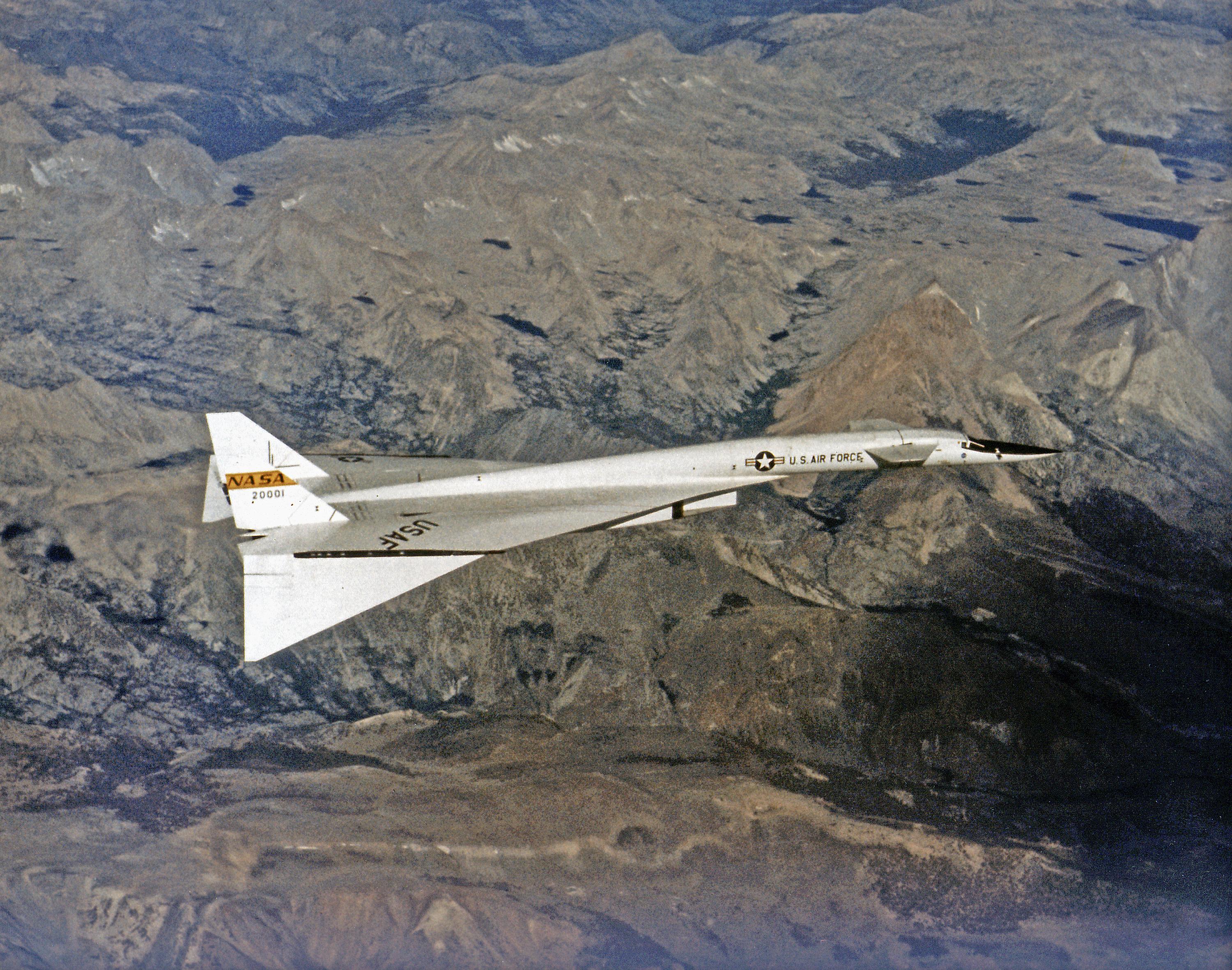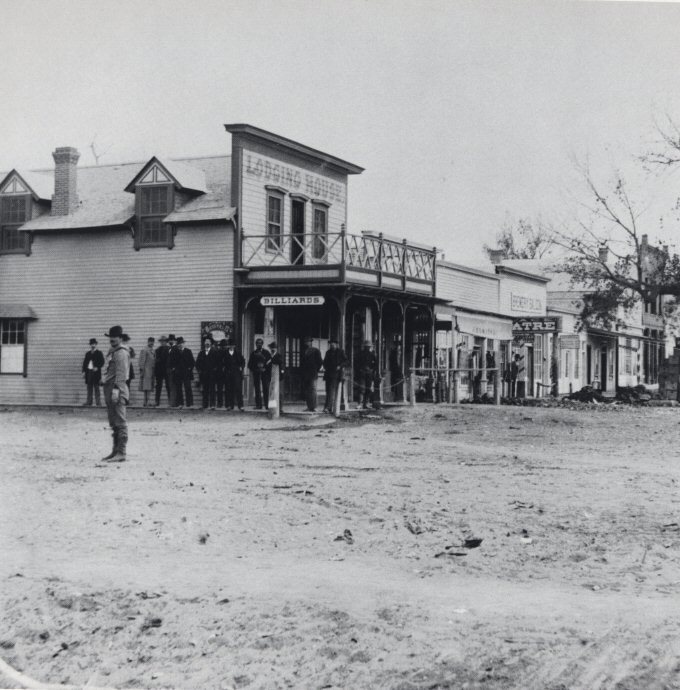|
Alzada, Montana
Alzada (also known as Stoneville and Telegraph Point) is a census-designated place in southern Carter County, Montana, United States. As of the 2010 census it had a population of 29. It is located at the intersection of U.S. Route 212 with Montana Secondary Highways 323 and 326, near the Wyoming and South Dakota borders. The Little Missouri River flows northwards to the west of the community. Alzada is in the Mountain Time Zone. History Alzada was first established in 1878, by 9th U.S. Infantry soldiers as Camp Devin Camp Devin was a temporary United States Army camp established on June 30, 1878 during the building of the Fort Keogh-Deadwood Telegraph Line. It was named for Brevet Major General Thomas C. Devin, and abandoned in late 1878. History On June 1, 1 ..., on the Deadwood, Dakota Territory to Fort Keogh, Montana Territory telegraph line. It was called the Little Missouri River Telegraph Station, and manned by soldiers of the 7th U.S. Cavalry. Then it was nam ... [...More Info...] [...Related Items...] OR: [Wikipedia] [Google] [Baidu] |
Census-designated Place
A census-designated place (CDP) is a concentration of population defined by the United States Census Bureau for statistical purposes only. CDPs have been used in each decennial census since 1980 as the counterparts of incorporated places, such as self-governing cities, towns, and villages, for the purposes of gathering and correlating statistical data. CDPs are populated areas that generally include one officially designated but currently unincorporated community, for which the CDP is named, plus surrounding inhabited countryside of varying dimensions and, occasionally, other, smaller unincorporated communities as well. CDPs include small rural communities, edge cities, colonias located along the Mexico–United States border, and unincorporated resort and retirement communities and their environs. The boundaries of any CDP may change from decade to decade, and the Census Bureau may de-establish a CDP after a period of study, then re-establish it some decades later. Mo ... [...More Info...] [...Related Items...] OR: [Wikipedia] [Google] [Baidu] |
9th Infantry Regiment (United States)
The 9th Infantry Regiment ("Manchu") is a parent infantry regiment of the United States Army. Unrelated units designated the 9th Infantry Regiment were organized in the United States Army in 1798 during the Quasi-War, in 1812 during the war of 1812, and in 1847 during the Mexican–American War. The 1812 regiment fought in the Battle of Lundy's Lane, and the 1847 regiment in the Battle for Mexico City. The lineage of the current regiment begins with the 1855 organization of the 9th Infantry Regiment, which was dispatched to the Pacific Northwest, where it served in the American Indian Wars. The regiment remained in the west during the American Civil War, garrisoning posts near San Francisco. After the end of the American Civil War the regiment continued its service through the final Indian Wars, then fought at the Battle of San Juan Hill during the Spanish–American War. During the Boxer Rebellion, the 9th Infantry was sent to China, where it earned the nickname Manchu. Aft ... [...More Info...] [...Related Items...] OR: [Wikipedia] [Google] [Baidu] |
List Of Census-designated Places In Montana ...
This article lists census-designated places (CDPs) in the U.S. state of Montana. As of 2018, there were a total of 235 census-designated places in Montana. Census-Designated Places References See also *List of cities and towns in Montana *List of counties in Montana {{Lists of CDPs by state Census-designated places Montana Montana () is a U.S. state, state in the Mountain states, Mountain West List of regions of the United States#Census Bureau-designated regions and divisions, division of the Western United States. It is bordered by Idaho to the west, North ... [...More Info...] [...Related Items...] OR: [Wikipedia] [Google] [Baidu] |
Semi-arid Climate
A semi-arid climate, semi-desert climate, or steppe climate is a dry climate sub-type. It is located on regions that receive precipitation below potential evapotranspiration, but not as low as a desert climate. There are different kinds of semi-arid climates, depending on variables such as temperature, and they give rise to different biomes. Defining attributes of semi-arid climates A more precise definition is given by the Köppen climate classification, which treats steppe climates (''BSk'' and ''BSh'') as intermediates between desert climates (BW) and humid climates (A, C, D) in ecological characteristics and agricultural potential. Semi-arid climates tend to support short, thorny or scrubby vegetation and are usually dominated by either grasses or shrubs as it usually can't support forests. To determine if a location has a semi-arid climate, the precipitation threshold must first be determined. The method used to find the precipitation threshold (in millimeters): *multip ... [...More Info...] [...Related Items...] OR: [Wikipedia] [Google] [Baidu] |
Köppen Climate Classification
The Köppen climate classification is one of the most widely used climate classification systems. It was first published by German-Russian climatologist Wladimir Köppen (1846–1940) in 1884, with several later modifications by Köppen, notably in 1918 and 1936. Later, the climatologist Rudolf Geiger (1894–1981) introduced some changes to the classification system, which is thus sometimes called the Köppen–Geiger climate classification system. The Köppen climate classification divides climates into five main climate groups, with each group being divided based on seasonal precipitation and temperature patterns. The five main groups are ''A'' (tropical), ''B'' (arid), ''C'' (temperate), ''D'' (continental), and ''E'' (polar). Each group and subgroup is represented by a letter. All climates are assigned a main group (the first letter). All climates except for those in the ''E'' group are assigned a seasonal precipitation subgroup (the second letter). For example, ''Af'' i ... [...More Info...] [...Related Items...] OR: [Wikipedia] [Google] [Baidu] |
B-1 Lancer
The Rockwell B-1 Lancer is a supersonic variable-sweep wing, heavy bomber used by the United States Air Force. It is commonly called the "Bone" (from "B-One"). It is one of three strategic bombers serving in the U.S. Air Force fleet along with the B-2 Spirit and the B-52 Stratofortress . The B-1 was first envisioned in the 1960s as a platform that would combine the Mach 2 speed of the B-58 Hustler with the range and payload of the B-52, and was meant to ultimately replace both bombers. After a long series of studies, Rockwell International (now part of Boeing) won the design contest for what emerged as the B-1A. This version had a top speed of Mach 2.2 at high altitude and the ability to fly for long distances at Mach 0.85 at very low altitudes. The combination of the high cost of the aircraft, the introduction of the AGM-86 cruise missile that flew the same basic speed and distance, and early work on the B-2 stealth bomber reduced the need for the B-1. The program was ... [...More Info...] [...Related Items...] OR: [Wikipedia] [Google] [Baidu] |
Lead, South Dakota
Lead ( ) is a city in Lawrence County, South Dakota, United States. The population was 2,982 at the 2020 census. Lead is located in western South Dakota, in the Black Hills near the Wyoming state line. History The city was officially founded on July 10, 1876, after the discovery of gold. The city was named for the leads or lodes of the deposits of valuable ores. It is the site of the Homestake Mine, the largest, deepest () and most productive gold mine in the Western Hemisphere before closing in January 2002. By 1910, Lead had a population of 8,382, making it the second largest town in South Dakota. Lead was founded as a company town by the Homestake Mining Company, which ran the nearby Homestake Mine. Phoebe Hearst, wife of George Hearst, one of the principals, was instrumental in making Lead more livable. She established the Hearst Free Public Library in town, and in 1900 the Hearst Free Kindergarten. Phoebe Hearst and Thomas Grier, the Homestake Mine superintendent, worked ... [...More Info...] [...Related Items...] OR: [Wikipedia] [Google] [Baidu] |
Battle Of The Little Bighorn
The Battle of the Little Bighorn, known to the Lakota and other Plains Indians as the Battle of the Greasy Grass, and also commonly referred to as Custer's Last Stand, was an armed engagement between combined forces of the Lakota Sioux, Northern Cheyenne, and Arapaho tribes and the 7th Cavalry Regiment of the United States Army. The battle, which resulted in the defeat of U.S. forces, was the most significant action of the Great Sioux War of 1876. It took place on June 25–26, 1876, along the Little Bighorn River in the Crow Indian Reservation in southeastern Montana Territory. Most battles in the Great Sioux War, including the Battle of the Little Bighorn (14 on the map to the right), "were on lands those Indians had taken from other tribes since 1851". The Lakotas were there without consent from the local Crow tribe, which had treaty on the area. Already in 1873, Crow chief Blackfoot had called for U.S. military actions against the Indian intruders. The steady Lako ... [...More Info...] [...Related Items...] OR: [Wikipedia] [Google] [Baidu] |
Medal Of Honor
The Medal of Honor (MOH) is the United States Armed Forces' highest military decoration and is awarded to recognize American soldiers, sailors, marines, airmen, guardians and coast guardsmen who have distinguished themselves by acts of valor. The medal is normally awarded by the president of the United States, but as it is presented "in the name of the United States Congress", it is sometimes erroneously referred to as the "Congressional Medal of Honor". There are three distinct variants of the medal: one for the Department of the Army, awarded to soldiers, one for the Department of the Navy, awarded to sailors, marines, and coast guardsmen, and one for the Department of the Air Force, awarded to airmen and guardians. The Medal of Honor was introduced for the Department of the Navy in 1861, soon followed by the Department of the Army's version in 1862. The Department of the Air Force used the Department of the Army's version until they received their own distinctive versio ... [...More Info...] [...Related Items...] OR: [Wikipedia] [Google] [Baidu] |
Peter Thompson (Medal Of Honor)
Peter Thompson (September 1, 1853 – December 3, 1928) was a Scots-American soldier who was awarded a Medal of Honor for his actions at the Battle of the Little Bighorn. Biography Thompson was born in Markinch in Fife, Scotland. After emigrating with his family to the United States in 1865, Thompson lived near Pittsburgh, and later in Indiana County, PA, where he worked as a miner. He enlisted in the United States Army in September 1875, serving in the U.S. 7th Cavalry Regiment's C company from 1875 until 1880. His commanding officer was Capt. Thomas Custer. After an honorable discharge, he resided first in Lead, SD, where he worked at the Homestead Mine. Later he moved to Alzada, MT, where he became a rancher. He married Ruth Boicourt in 1904. They had two children, Susan and Peter Jr., born in 1906 and 1909. Thompson died on December 3, 1928, at Hot Springs, SD, of heart failure. He is buried West Lead Cemetery Lead, South Dakota. Little Big Horn In 1876, while serving ... [...More Info...] [...Related Items...] OR: [Wikipedia] [Google] [Baidu] |
Miles City, Montana
Miles City ( chy, Ma'xemâhoévé'ho'eno) is a city in and the county seat of Custer County, Montana, United States. The population was 8,354 at the 2020 census. History After the Battle of the Little Bighorn in 1876, the U.S. Army created forts in eastern Montana, including one where the north-flowing Tongue River flowed into the east-flowing Yellowstone River. The first fort was known as the Tongue River Cantonment or the Tongue River Barracks and was founded on August 27, 1876. A second, permanent fort was constructed on higher ground two miles to the west of the mouth of the Tongue and this became Fort Keogh. Fort Keogh (named after Captain Myles Keogh, one of the battle dead, whose horse, Comanche, was the lone survivor of Custer's command) started as a few rough winter cabins, but grew into a moderate sized western fort, from which its commander, General Nelson A. Miles, effectively brought the remaining "uncontrolled" Native Americans into subjugation during the la ... [...More Info...] [...Related Items...] OR: [Wikipedia] [Google] [Baidu] |
7th Cavalry Regiment (United States)
The 7th Cavalry Regiment is a United States Army cavalry regiment formed in 1866. Its official nickname is "Garryowen", after the Irish air " Garryowen" that was adopted as its march tune. The regiment participated in some of the largest battles of the Indian Wars, including its famous defeat at the Battle of Little Bighorn, where its commander Lieutenant Colonel George A. Custer was killed. The regiment also committed the Wounded Knee Massacre, where more than 250 men, women and children of the Lakota were killed. The 7th Cavalry became part of the 1st Cavalry Division in the 1920s, it went on to fight in the Pacific Theater of World War II and took part in the Admiralty Islands, Leyte and Luzon campaigns. It later participated several key battles of the Korean War. During the Korean War the unit committed the No Gun Ri massacre, in which between 250–300 South Korean refugees were killed, mostly women and children. The unit later participated in the Vietnam War. It disti ... [...More Info...] [...Related Items...] OR: [Wikipedia] [Google] [Baidu] |





.jpg)


